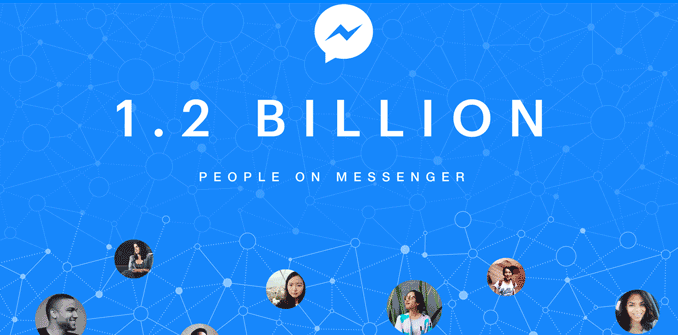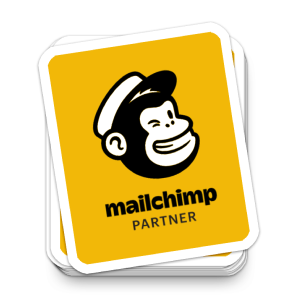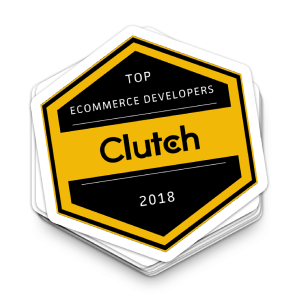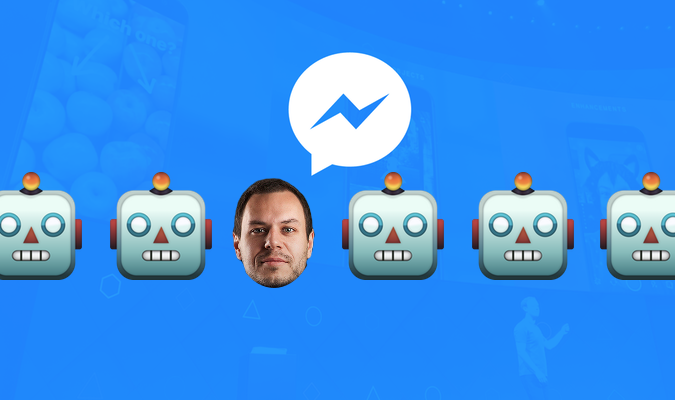Guide for Facebook chatbots: Why 2017 is the year of bots and roosters
The Chinese astrology system lies on the back of (mostly) tame animals. Goat, piggy, rooster and dragon are only a few of the pets that mark the year they rule with their characteristics. Thus the rabbit brings us caution, the rooster accuracy, and the dragon honor and dignity. This astrological farm does not depend on its inhabitants alone. Five natural elements (wood, water, earth, fire and gold) directly affect the behavior of the animal, changing its characteristics and the year of reign itself. For example, a completely randomly picked 1981 was the year of golden rooster – a brave, determined and workaholic king of henhouse. But is 2017, apart from being the year of rooster, also the year of ‘chatbots’?
Yes, this year is again a year of rooster, and a fiery kind for that matter, especially gifted for accuracy, loyalty, and devoted work, and another contender for the ruler of the year has precisely these features – chatbot. It is no coincidence that all digital creatives consider 2017 also the year of chatbots because it has been shown that out of all trends and innovations, bots (and artificial intelligence) hold the first place and do not intend to go awry. Namely, companies increasingly recognize the values of the Chinese rooster and leave chat communication to bots – ensuring the accuracy of the transferred information, uninterrupted availability and stoically automated commitment to billions (!) of users.

Facebook Messenger hosts over 100,000 such bots, so Mark Zuckerberg (along with learning Mandarin) directed the recent F8 conference precisely toward bots and their integration into the Messenger platform. There is a lot of news, and it will make even the most modern creatives sit in the school benches once again and hit the books. But remember, although chatbots are a relatively new kind of interaction, they are here to stay – as responsive web design or search engine optimization once were. In addition, chat platforms are huge user gatherings and new digital communication channels, and precisely chatbots allow us to create conversational experiences integrated with existing web, mobile or native solutions. The remainder of the text is dedicated to those concepts precisely, which are also related to the news from the F8 Facebook developers conference.
What is (Messenger) Chatbot actually?
Chatbot is an application that is developed and located on a web server just like any other web application. Once developed, chatbot can “live” within multiple selected communication platforms such as Facebook Messenger, Slack or Skype – but these are “only” the communication channels where chatbot is available. As for the Messenger platform, the bot is packed and distributed like any other Facebook application, and it also directly accesses a great deal of powerful Facebook functions, that are summarized in this video from the F8 conference…
On which communication platforms do we find chatbots?
You can distribute Chatbots to Facebook, Slack, Skype, Kik, Viber, Telegram, Discord, and WeChat. All modern chat platforms run into bot “industry” so it is just a matter of time when bot implementation will be a defacto standard for any communication platform. Important: Each platform has its own rules about the conversation UX, so the developer needs to study the documentation well before building the whole system. Facebook Developers page is a good example of such documentation.
Where are chatbots used?
Chatbot is well prepared for predictable communication situations, respectively when the site administrator and developer can clearly identify what the user will ask and how to respond. Some of the typical examples are:
- Ecommerce – buying simple products, reviewing the last order, search for order-based invoices, listing past orders, reserving products, vouchers, or concert tickets, retrieving products within a customer support chat (for example, via WooCommerce REST API).
- Customer support – sending queries to customer support, review of past reported issues, automatic review of current issues (e.g. chatbot from Croatian Telecom could immediately alert the user about the slow Internet problems in his neighborhood because FB Messenger allows a subscription to chatbot notifications, described below).
- Utilities – checking account balance, delivering counter readings, checking consumption (water, gas, cell phones …), inquiries about waste disposal schedules…
- Food and drink – ordering food, coffee delivery, water delivery, table reservation, cancelling reservation…
- Group chat – bots that help group chat sessions to book Uber, airline ticket or order food delivery.
There are many examples, and Kemal and Allison have bragged about the variety of brands and their chatbot functions. Check Subway and ordering sandwiches @ 09:06 or maybe a closer example for us – checking your cell phone bill on T-Mobile chatbot…
How many types of chatbots are there?
Roughly, there are two types of chatbots – scripted and intelligent bots. Scripted bots talk to users using the exact script, and the path and direction of conversation cannot vary. Their communication pattern looks like an installation wizard and guides the user step-by-step to the desired goal. There can be several conversation endings, but they are clearly known and predefined. Technologically, they are accomplished using a set of if-then, for-each or while loops with constant communication with databases. Basically, they are back-end applications that have their usual business and datalayer logic.
On the other hand, intelligent bots are a broad and multidisciplinary area where the level of bot intelligence is directly dependent on the invested effort, budget, knowledge and time of the developer. They are developed using existing frameworks and cloud tools such as Facebook Wit.Ai, Microsoft Bot Framework, AWS Lex, or Google API.AI.
As an example of complexity, Mitsuku is being developed for twelve years already and is considered to be the most sophisticated chatbot today.
Can bots manage crisis PR/community management situations?
They cannot! In such situations, automated monitoring is set on certain keywords and, when detected, CM takes over the communication within FB Messenger (the Handoff protocol is announced at the F8 conference but is not yet widely available). Bot can also have CM’s continuous supervision, but this has to be specifically agreed with the client, especially if the volume of conversation is impossible for meaningful human following. Benoit Dumoulin from the F8 conference showed their team’s progress in processing natural language, but it is apparent that technology is still not at the level where it could manage more complex human questions… Let alone irony and trolling. :/
How much time (and money) does it take to develop a scripted bot?
It depends on the client, brand type, and how many types of conversations the chatbot has to “cover”. If you constantly get the question “What are your office hours?” on Facebook, chatbot can in such case be programmed to answer only that question and you can finish its development in one or two business days.
Development time for a scripted bot can last for a month, a quarter, or even half a year (the artificial intelligence and bot framework industry is changing too fast to develop any meaningful programming plan for more than half a year). This is also a recommendation – start with a scripted bot, a simple conversation model, iterate and slowly build new functions.
How much time and budget is needed to develop an ‘intelligent’ bot?
In the Croatian commercial market the profitability of intelligent bots is questionable (in a sense that they understand the “language” well and communicate freely with the users). Namely, better platforms for development of intelligent bots – AWS (Lex) and Microsoft (LUIS) – do not recognize Croatian language, which is the first problem for a developer. Facebook’s Wit.AI supports our language, but even with solving this language barrier you come to a bigger problem – the domestic marketing market and the potential application are really small for making their development cost-effective (at least for typical online applications).
You should consider an intelligent bot a larger project that lasts for at least a quarter, and it is still questionable how intelligent it will be. For example, Rose and Mitsuku, bots with most wins at the Loebner Contest, have been in continuous development for over a decade so it is recommended not to promise customers that type of functionality. 🙂
How do my web users access Facebook chatbots?
Users on your site can access chatbots in several ways:
- M.ME links – these are simple links placed on a website, and their format is http://m.me/Neuralab This link will open messenger.com and immediately find chatbot of the specified Facebook page. M.ME links support URL parameters, and documentation is available on the official Facebook developers site.
- Messenger codes – such visual codes are actually graphics (.png) that users can scan with the mobile Messenger application and start talking to your bot immediately. Since April 2017, the codes have been parameterized – developers can arbitrarily generate codes to pass different ref parameters to the same bot. For example, you can use this to track which codes are most scanned. Bot could even activate various functions based on the scanned code. They are ideal for “guerilla” marketing because you can stick them literally everywhere.
- Checkbox plugin – it allows subscribing users to chatbot messages. It is the same method as subscribing a user to the MailChimp list. It is deal for ecommerce situations when users can get subscription-based discount, coupon, or some other benefit.
- The fourth method is by using the Send to messenger action. It allows you to direct an existing web user to Facebook Messenger platform and subscribe him to chatbot messages. This action is quite useful because not only will the user begin a chat with the bot, but your bot can also start talking to the end user independently (e.g. when you post some news or want to point out eCommerce discounts). The user must authorize this action using a button like this one…
- The fifth, and also the simplest method is to use the “Message us” button that instantly opens the Messenger.com platform or native mobile application and triggers conversation with the chatbot.
- The sixth, and also the most complicated method, is through the so-called customer matching where it is enough to own the phone number of the user and use a single API call to send the chatbot messenger request directly to the Facebook user.
How can Facebook users come to my Facebook chat?
Users who interact with Facebook page can reach the chatbot in several ways:
Discovery tab – this feature was released at the F8 conference and it will allow users to discover and find your bot within the Messenger application itself.
Messenger Conversation Ads are news feed ads that are optimized for advertising the chatbot and your Messenger channel.

Are bots actually a Facebook application?
Yes, chatbots on Messenger basically are Facebook applications, but their development is more complex than prize competitions, casual games and photo competitions. The main difference is that typical Facebook applications have general short life-cycle, while chatbot is developed for a period of one, two or three years, and its functions should constantly evolve. The second difference is that the bot has no front-end interface and web design in the classical sense.
Technologically speaking, the bot is actually a backend code developed in NodeJs, .NET C#, PHP, or other server-side programming language, and it also connects to the existing external services such as WordPress REST API, WooCommerce web store, Zendesk ticketing system, Salesforce CRM, etc.
Does the chatbot have access to user data
Chatbot can access the location, photo, age, sex, first and last name of the user and send the custom messages accordingly. This feature allows developers to create complex conversations and conversational flows. Just consider that as a developer you know the gender and year of birth of a user! This alone allows you to customize content, copywriting and messages to a youngster from Varaždin or a retiree from Split.
Important: Chatbot cannot access “likes” and user events such as favorite musicians, movies, or concerts.
On the other hand, the user can allow additional interactive actions within the so-called chat extension, and their functionality was also presented at the F8 conference:
Described frequently asked questions and functions are just an introduction to the multidisciplinary world of chatbots. You will need new knowledge and new approach for them because the existing Photoshop tools and JavaScript libraries do not count for a lot here. Quality and design of a conversation are the most important element, so I expect copywriters to flourish in this new digital leap.
It is instantly evident that the planning and interaction sketching phase is much heavier for bots than for website design. All bot creators agree on one thing – plan your conversations well and focus on a small number of conversation types for starters. Connect tools for bot supervision and keep track of how people are asking questions and comments. Only then start developing new conversational flows, always based on strong analytical data.
Additional reading:
The Great A.I. Awakening, Gideon Lewis-Kraus, New York Times Magazine
Conversational UI Principles, Leszek Zawadzki
Does Conversation Hurt or Help The Chatbot UX, Mariya Yao, Smashing Magazine
A beginner’s guide to designing conversational interfaces, Kavin Paulson, Web Designer Depot






